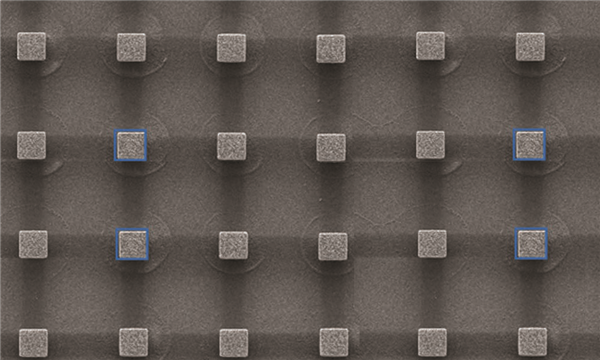
https://www.advancedsciencenews.com/sending-droplets-from-pillar-to-post/
In the fields of cell manipulation and microfluidic technologies, being able to control the behavior of fluids is a considerable challenge. To meet these challenges, the design of dynamic topologies of structures is required.
In an article in Advanced Functional Materials, Professor Yongmei Zheng and co-workers from the Key Laboratory of Bio-Inspired Smart Interfacial Science and Technology, and Beihang University, China, develop nano- and micro-pillar arrays (MNAs) to control microdroplet transport of fluids via magnetic induction.
These novel MNAs were fabricated by pouring polydimethylsiloxane (PDMS) and NdFeB composites into micro/nanopillar molds, and then these pillars were coated with SiO2 nanoparticles. It is these tiny pillars that are then magnetized, and become the physical component that can control droplet transportation in a magnetic field. These pillars are shown in the figure below.
In the presence of a magnetic field, these pillars bend and tilt, and the angle of action can be controlled by the intensity of the applied magnetic field (AMF). A maximum tilt-angle of 59° can be achieved. Furthermore, the direction of the tilt can be controlled depending on the orientation of the AMF.
These MNAs are hydrophobic, and so when they are wetted, the droplets that form can be moved thanks to the bending motion of these pillars, allowing the droplets to be transported in the direction of the tilt. The two videos at the bottom of this article first show this bending motion in action, and then the tranportation of the water droplet in this direction.
This exciting material, easily fabricated from molds, shows how novel properties can arise from the simple properties such as hydrophobacity and magnetization. The authors hope that such an array of nano- and micro-pillars, affected by magnetic fields, can one day be applied to the fields of cell manipulation and microfluidics technologies.